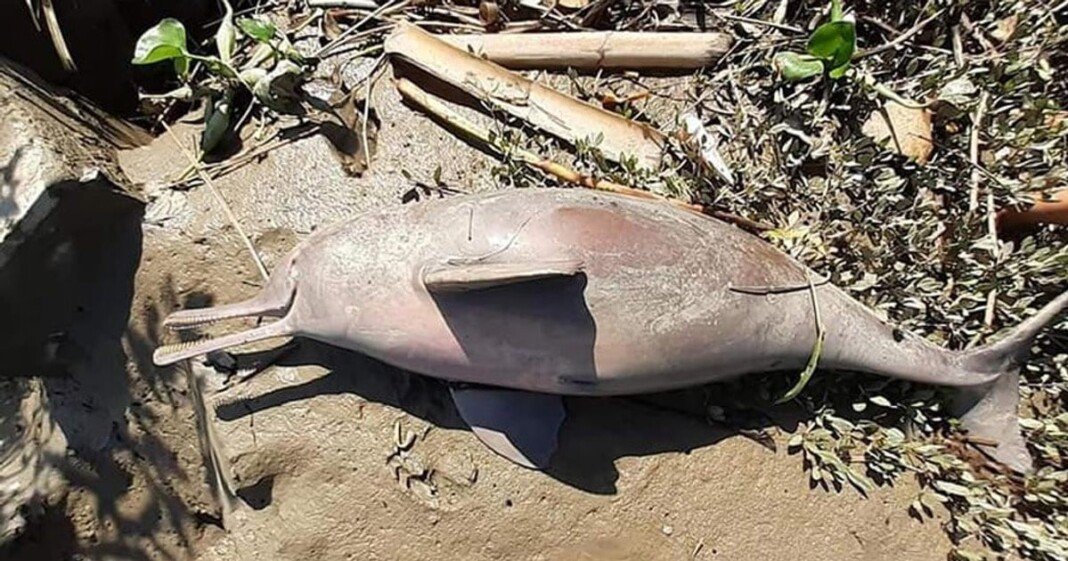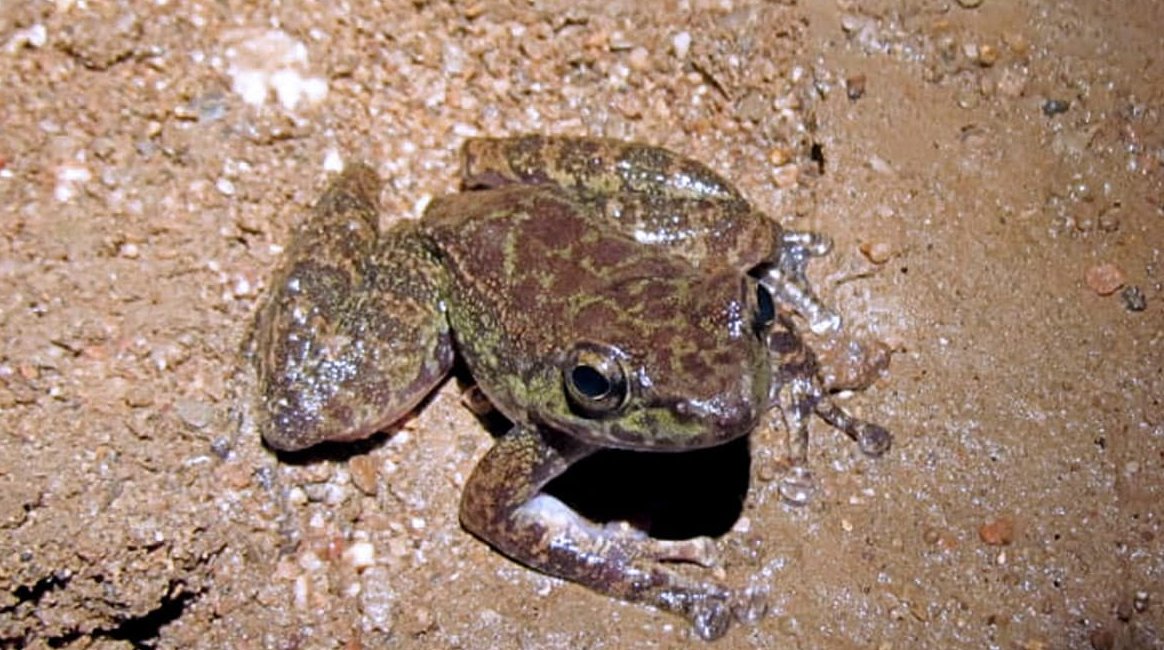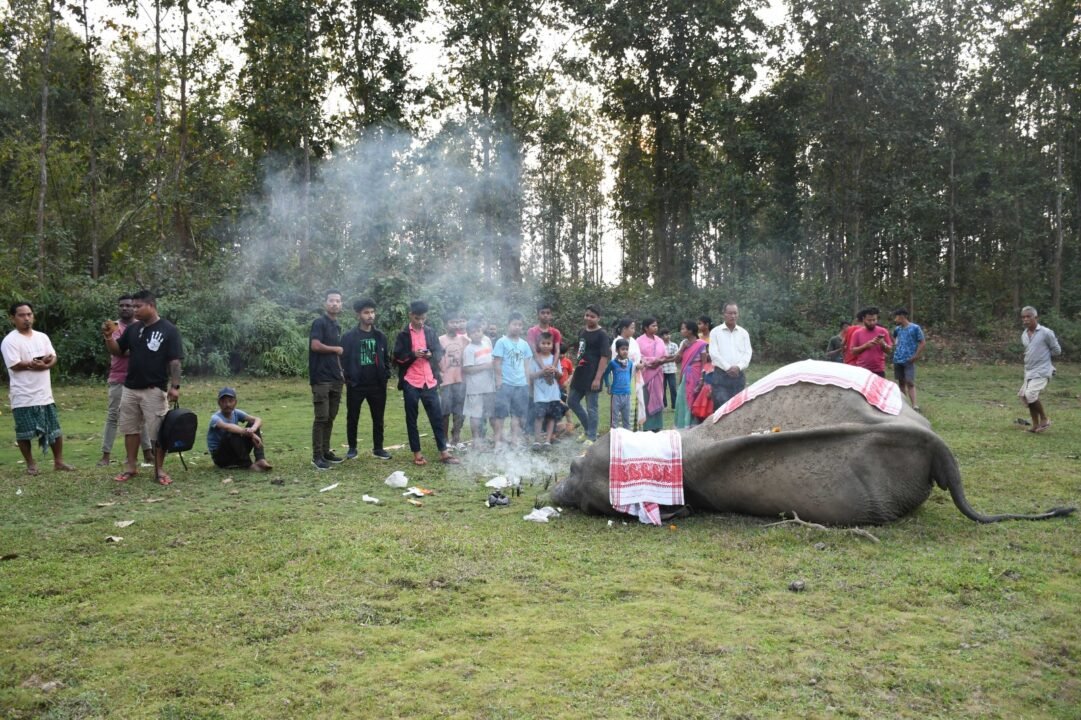In a grim reminder of the ongoing threats to endangered species, the carcass of a subadult Gangetic river dolphin was discovered by villagers on Wednesday morning in the Kulsi River near Kukurmara. The discovery has sparked concerns about the persistent issue of poaching and environmental degradation affecting these endangered mammals.
Upon finding the carcass, the villagers promptly informed the Kulsi Forest Range Office. Forest personnel arrived shortly thereafter to recover the remains of the dolphin. Observers noted several injury marks on the dolphin’s body, suggesting that the animal may have fallen victim to poaching by miscreants approximately two to three days prior.
The Gangetic river dolphin, classified as an endangered species under the Wildlife Protection Act of 1972, has been facing a severe decline in population. Recognizing the urgent need for conservation, the Central Government declared the Gangetic river dolphin as the national aquatic animal. Additionally, the Assam government has designated this species as the state’s aquatic animal, emphasizing its significance and the critical need for its protection.
Despite these efforts, reports indicate that several Gangetic river dolphins have either been poached or killed accidentally in the Kulsi river systems over the past few years. Sources lament the failure of the Forest Department to effectively curb these unnatural deaths, which continue to threaten the already dwindling population of the dolphins in the region.
The Kulsi River was once renowned for its dense population of Gangetic river dolphins. However, this distinction has been lost over time due to various factors contributing to the species’ decline. A significant portion of the river, from Kulsi to Kukurmara, remains dry for almost seven to eight months each year, leaving the dolphins with limited habitat. During the monsoon season, some dolphins migrate from low-lying areas or the Brahmaputra River to the Kulsi River, but they often fall prey to poachers or are killed accidentally.
The environmental conditions of the Kulsi River have further exacerbated the situation. Indiscriminate sand mining, contamination from industrial waste, and reduced rainfall upstream have severely polluted the river. The riverbed has also risen, making it increasingly inhospitable for the dolphins. These factors collectively contribute to the degradation of the natural habitat essential for the survival of the Gangetic river dolphins.
Conservationists and local communities are deeply concerned about the future of the Gangetic river dolphins in the Kulsi River. The recurring incidents of poaching and accidental deaths highlight the urgent need for stronger enforcement of wildlife protection laws and the implementation of effective conservation measures. The preservation of the Gangetic river dolphin is not only crucial for maintaining biodiversity but also for upholding the ecological balance of the river systems they inhabit.
The Gangetic river dolphin, known for its distinctive features and playful behavior, plays a vital role in the aquatic ecosystem. Its presence indicates a healthy river environment, making its conservation a priority for environmentalists and government agencies alike. The loss of these dolphins would signify a major setback for conservation efforts and the overall health of the river ecosystem.
To address this pressing issue, collaborative efforts between government agencies, local communities, and conservation organizations are essential. Public awareness campaigns, stricter enforcement of anti-poaching laws, and initiatives to restore the natural habitat of the dolphins are critical steps toward ensuring their survival. Additionally, measures to reduce pollution and regulate industrial activities along the riverbanks are necessary to protect the dolphins’ habitat.
The recent discovery of the Gangetic river dolphin carcass in the Kulsi River serves as a stark reminder of the challenges faced in wildlife conservation. It underscores the need for immediate and sustained action to protect these endangered mammals from poaching and environmental degradation. By prioritizing conservation efforts and fostering a collective sense of responsibility, there is hope for preserving the Gangetic river dolphin and ensuring the health of the river ecosystems they call home.
As investigations into the recent poaching incident continue, it is imperative for all stakeholders to remain vigilant and committed to safeguarding the future of the Gangetic river dolphin. The path to conservation is fraught with challenges, but with concerted efforts, it is possible to secure a safer environment for these magnificent creatures and restore the natural heritage of the Kulsi River.







